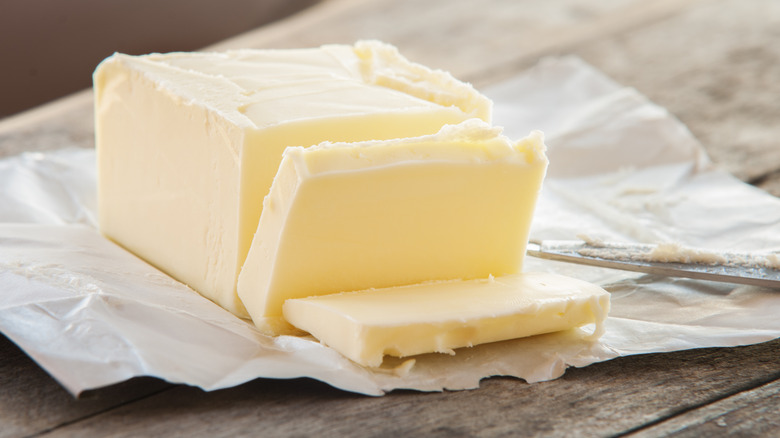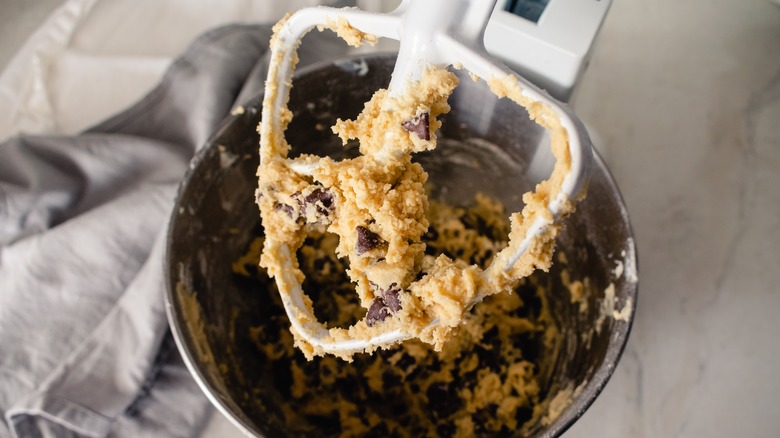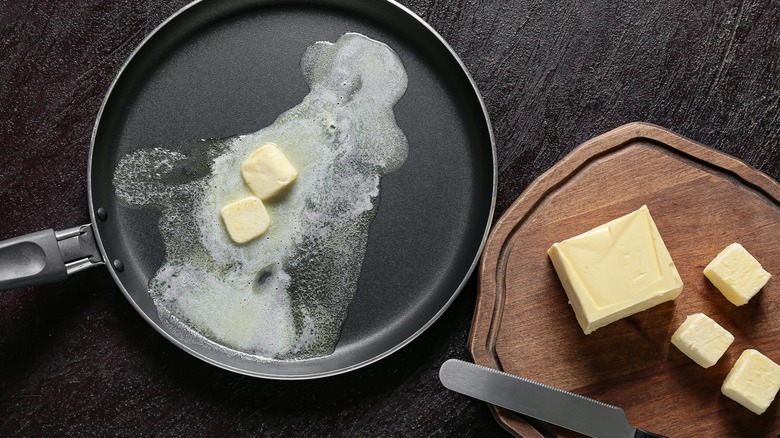Take Your Butter's Temperature For The Best Bakes Of Your Life
When it comes to baking, a single, tiny tool may be the difference between simply good and truly perfect: a digital thermometer. Chances are, you already have this tool and a basic understanding of why temperature matters in the kitchen — not only in terms of the oven but for the individual ingredients, too. If you've ever watched "The Great British Bake Off," you've probably seen the contestants struggle to laminate pastry dough as the heat and drama intensify in the famous white tent. This is because butter — one of the key ingredients behind so much of the magic in baking — behaves differently at different temperatures.
While it's not always possible to alter the temperature of the space in which you're baking, you can test and control the temperature of your butter to optimize your baking results. Inserting a digital thermometer directly into a stick of butter can help you determine whether you need to place it in the fridge to cool down or into the microwave to warm up.
Baking at room temperature
Most butter is primarily made up of about 80% milkfat and about 16% water(though this varies for different kinds of butter). When baking with butter, the process of mixing, beating, whipping, or creaming (when other ingredients, such as sugar, are added to the dough) is an opportunity to create air pockets in the buttery parts of the batter, which (when placed in a hot oven) will release water in the form of steam, causing a pastry to naturally rise without leavening products like baking soda.
Even the simplest of recipes, such as classic chocolate chip cookies, will often request that certain ingredients — especially fresh products generally stored in the refrigerator, like butter — be brought to room temperature before baking. The temperature of your kitchen, however, is bound to vary throughout the year. If you are creaming butter and sugar for baked goods like cookies, the butter should be around 60 degrees Fahrenheit (and not over 68 degrees Fahrenheit) at the start. This is because the motion of the mixer with the sugar will create friction, warming the butter, which should remain around 64 degrees Fahrenheit for optimal aeration during the baking process, resulting in a good rise and pleasant texture for your finished pastries.
Better butter baking practices
Most baking recipes in which butter is a main ingredient will indicate that it should be prepared in one of five ways: frozen, cold, at room temperature, melted, or browned. Frozen butter can be easily grated for even distribution in pie or biscuit doughs that need to be minimally handled. For laminated doughs, like croissants, butter must be kept cold throughout the entire process (to ensure there are chunks of butter throughout), so make sure all surfaces and tools are kept cool, as well, and minimize contact with warm hands. Cookies and cakes are typically made with room temperature butter (which is when it is most important to make use of a thermometer) though melted or browned butter can be substituted with adjustments to the quantity.
Browning butter is one of the more advanced preparations for butter and relies on one's personal senses, rather than the use of a thermometer. In this case, the nutty smell, the sounds of bubbles popping, and the brown color of the butter will let you know it's ready and will lend a lovely but subtle nutty flavor to your pastry.



